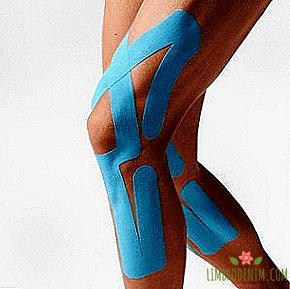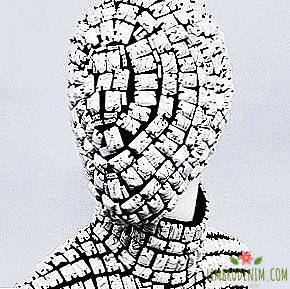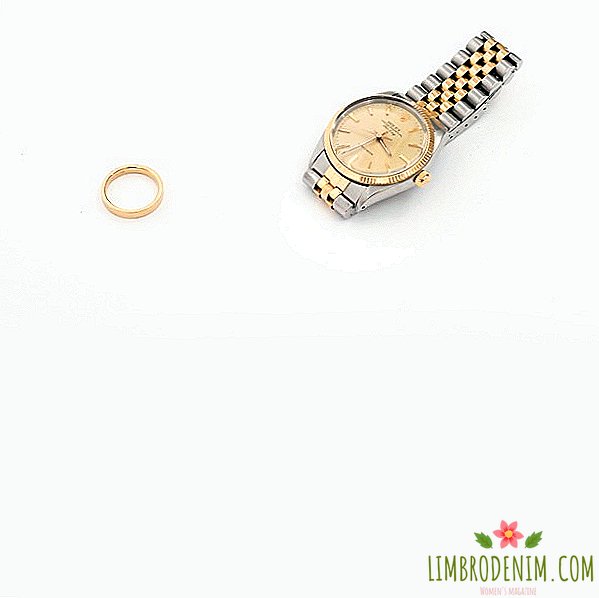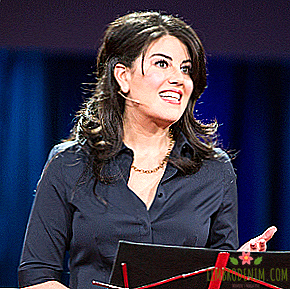"Take it off immediately": Everything you wanted to know about the hijab
It is unlikely that there is a wardrobe item, which causes more violent disputes than the headdress of Muslim women. Hijab has never been “just a handkerchief”, and globalization has completely turned a piece of cloth into a cultural, religious and political symbol that personifies the Muslim world and above all the ideas of Europeans about it. In Russia, the federal minister of education and the head of Chechnya argue furiously about permission and the ban on schoolchildren - and the students' parents dispute the right to wear the hijab in court; just the other day in Austria decided to ban the burqa and niqab, covering the face.
While some are calling for “liberating the women of the East”, tearing off the covers from them, others are in favor of the right to choose for everyone, regardless of whether the woman wants to sunbathe topless or hide her body from curious glances. For some secular Europeans, the hijab (for example, at school) causes allergy in itself, as a reminder of someone else’s religiosity, and the radical right is simply convinced that complete assimilation is the rule of the hostel, which is not disputed.
At the same time, the Muslim fashion market is growing so rapidly that it is already impossible to ignore it: Millennial Muslims have a great influence on modern culture, where traditions melt in one cauldron, but the issue of humanity and the symbolic value of the hijab arises again and again.
We understand what the hijab means today and what points of view exist among researchers and the believers themselves.

Not just a handkerchief

Hijab in Arabic means "barrier" or "veil", and often so called the shawl itself, with which Muslim women cover their heads. However, in fact, the meaning of the term is much broader: hijab is not only a headdress, but also all clothing that corresponds to Muslim ideas about how a decent woman looks (that is, any opaque attire that reveals only the face and hands and does not fit the figure) . There is also an "inner hijab" - by this means spiritual qualities, such as chastity and respect for God, but the "inner hijab", unlike a covered head, does not catch the eye, and therefore does not cause questions.
The basic principles of the Muslim dress code are contained in the Quran and are rather unambiguously interpreted by theologians. In verse 24:31 it is said that Muslim women should “protect their genitals”, “cover the neckline with curtains” and not show their beauty to anyone except her husband and other relatives belonging to the category of mahras - all relatives for whom a woman is called according to the law can not get married. Verse 24:60 specifies that older women who are no longer going to marry may not strictly follow the prescriptions about the hijab, but still it is better not to deviate from them. And finally, in verse 33:59, there is a requirement for a headdress: Muslim women are advised to “bring their veils together” so that other people will not be mistaken for “slaves or harlots”, that is, be treated with respect. Girls are required to wear the hijab from the beginning of puberty - the first menstruation.
In most of today's Muslim countries, the tradition of covering the head existed long before Islam, which appeared only in the VII century.

In the Quran there is no description of specific types of modest clothing, and therefore the color of the hijab and styles are very different from region to region. For example, in the UAE and Saudi Arabia, both men and women dress alike and cover their heads, but the traditional color of the female dress is black, and the male color is more suitable for the local climate white. There is a curious version linking such a distribution with military history: allegedly battles between Arab tribes often took place at night, and a woman dressed in black could have disappeared unnoticed, while men deliberately dressed so that they could be seen from afar.
In most of today's Muslim countries, the tradition of covering the head existed long before Islam, which appeared in the VII century. The habitual dress only adapted to the requirements of the new religion, without finally dissolving into them, which gave rise to many varieties of the national Muslim costume. In Arab countries, women can most often be seen in black abayas with embroidery, Muslim women in India wear bright saris or salwar kamizas (sets of wide trousers, long tunic and scarf or headscarf), and Iranians from villages around the Persian Gulf cover their face with embroidered beads or metal masks, reminiscent of false mustache.
"Hijab, niqab, burqa and so on - these are all local traditions: as is customary in the region and as the husband permits. Allow the husband to walk with an open face - you can, allow to walk in a headscarf and jeans - you can," explains Svetlana Babkina. - Everything depends on the country's liberalism and husband's liberalism within the country’s liberalism. "
Symbol of oppression or feminist gesture

The hijab draws a huge baggage of negative associations: it is no wonder that the emancipated West regards the covered head as a symbol of powerlessness in which millions of women still live. In the same Saudi Arabia, citizens can not drive a car and appear in public without an accompanying man, and in Afghanistan you can even pay for your life by going grocery shopping alone. Western politicians who come to the negotiations in Muslim countries have to choose between paying tribute to local traditions (Valentina Matvienko, for example, to go to Saudi Arabia, she got a green hijab) or a clear demonstration of European values: Angela Merkel and her German defense minister, Ursula von der Lyayen, and, of course, the same far-right French spokeswoman Marine Le Pen.
Speeches of European politicians against the Muslim dress code can hardly be called bold: it’s one thing when you lead a world power and come to a conservative country with a diplomatic visit, and quite another when you grew up in this culture and oppose the system, really risking freedom and by life. Nevertheless, in countries where the absence of the hijab is punishable by law, protest groups appear that advocate for the right to choose: for example, supporters of the Iranian movement My Stealthy Freedom publish their bare-headed photos, jeans and makeup in social networks. Male pro-feminists, on the contrary, wear a hijab to support their wives and girlfriends.
Another example is Syrians who have been captured by ISIS militants. (the organization is recognized as terrorist, its activity on the territory of the Russian Federation is prohibited. - Approx. Ed.): once free, women defiantly burn the black burqas that fundamentalist terrorists put on them. It’s hard not to recall Western feminists, who are credited with burning bras in protest against patriarchy - but, like any bright media image, this example does not reflect a complex reality.

On the Russian-speaking Muslim resources often condemn girls who have hair or the lower part of the chin visible from under the shawl: theologians believe that this area is not part of the face, and therefore should be closed, as is the neck. The “correct” hijab completely covers everything except the face, a special fitting cap can stick out from under it, but the hair must remain inside. For example, the Islam.ru resource reports that girls who have a neck, hair and part of the head visible are “sinful” if they are seen by foreign men. In general, in Muslim forums you can find the answer to any troubling question, including from the beauty sphere: for example, whether a Muslim woman can paint her nails or not (the right answer is impossible, otherwise ablution before namaz does not count).
Ban or permit

DW Sabine Faber is confident that the total ban of the burqa, which is considered a symbol of oppression even by progressive Muslim women, will not solve the problem, but will only aggravate it: when such a law comes into force, religious husbands simply forbid wives to go outside, and the conservative Muslim community will further closes in on itself. The same situation with hijabs in schools: prohibiting girls from attending lessons in a headscarf, the authorities, in fact, deprive them of the opportunity to get a secular education and make an informed choice. And if the ban on hats that completely or partially cover the face can still be explained by concern for safety, then fear of the hijab, covering only the hair and neck, looks more like intolerance than fighting the terrorist threat.
Most democratic countries are constantly forced to balance between secularism and freedom of religion - and everything is not completely obvious. The French authorities went further than others, rejecting any religious paraphernalia, so headscarves are prohibited in schools, and Muslim women were only allowed to defend the right to be on the beach in Burkini through the Supreme Court. In Russia, such a ban does not work everywhere: after the recent scandal in a rural school in Mordovia, where teachers were forbidden to wear headscarves, the Chechen parliament adopted a special amendment to the law on education, allowing schoolgirls to come to classes in the hijab. However, wearing the hijab in the republic is almost mandatory, and the issue of a headscarf for the Chechen leadership is also a matter of political influence.
Most Russians are calm about hijabs: this year, 50% of respondents from the VTsIOM survey said they need to lift the ban on wearing hats so Muslim girls can safely learn. Practice shows that the ban on the hijab gives rise to many domestic problems - for example, before official permission to be photographed on documents in a headdress, many Muslim women in Tatarstan simply refused to receive a passport.
Although in religious families hijab is perceived as a duty, many women decide to “cover up” on their own - for them hijab becomes a kind of manifesto of independence, identity and loyalty to principles. For young Muslim women living in Western countries, this is becoming a matter of honor. After the September 11 terrorist attack and the subsequent flourishing of Islamophobia, any girl in a headscarf is seen as a terrorist by default - Muslim women consider it their duty to destroy this dangerous stereotype.
In a world where the female body is perceived as a commodity, the desire to hide its beauty from outsiders seems radical

Progressive young Muslims, whom Shelina Janmohamed dubbed "generation M", have their own role models - people who break stereotypes without abandoning their culture: for example, fencer Ibtihaj Muhammad, who was the first among American women to perform at the Olympiad in the hijab, or Nobel Prize Malala Yusufzai Awards. The Muslim community has its memes, publics and YouTube channels, its clothing brands and halal startups, music and fashionable hijab-swag clips: for example, the singer Mona in her incendiary track declares that she didn’t want to spit on haters. to anyone to account for your hijab.
Islamic fashion has long gone beyond the mipster get-together and is strengthening its position around the world: Marks & Spencer took on the burkini, DKNY, Uniqlo, Mango and Tommy Hilfiger produce capsular collections for Ramadan, Dolce & Gabbana make the Abai line specifically for Muslim countries, and the “course on modesty” was taken on the catwalks in Milan, Paris and New York.
If television rather demonizes Islam, then social networks make Muslim culture closer and more understandable: for example, on the video blog Aidan Mamedova, who answers questions about her religion with humor, tests cosmetics and shares her discourse on life, almost 150 thousand people have signed they are all Muslims. Hijab activists offer women to try on a headscarf to feel like Muslim women: as a rule, girls who have covered their heads for the first time feel surprisingly comfortable.
No matter how paradoxical it may sound, the hijab can be a feminist gesture: in its popular appeal, Hannah Yusuf explains that the idea of "oppressed eastern women" is a product of condescending colonialism, and the hijab can be not only a religious symbol, but also a way to oppose culture violence The desire to hide their beauty from outsiders is a kind of response to the world where the female body is sexualized and perceived as a commodity. Still, radical feminists consider attachment to the hijab a manifestation of the Stockholm syndrome. And the moderates simply support the right of women to wear what they like — be it pants, a tiny bikini, or a black bedspread. “There is nothing liberating in being covered, as well as in showing any parts of your body. True freedom is in the ability to choose,” Yusuf summarizes.

Moscow gradually made it clear to me that I was "not Russian." Only here I understood that Tatar. Probably, at this moment I could “get Russified”, change my name, merge with the majority, but it so happened that I, on the contrary, began to be interested in my roots, history and religion of the peoples of the Volga region.
Starting to study the Quran, I was shocked: it says that our Universe is expanding, that our sky (atmosphere) and earth were initially a single "cloud", and then they were separated, the process of the emergence of the embryo was described there and many more. Then I felt and believed that this teaching could not be the creation of man, that it was incomparably more. So I gained faith, uttered Shahada, became a Muslim, began to read namaz. I perceived the hijab issue as the Creator’s concern for me. I began to pray that the Most High would help me to cover up so that it would be a blessing for my present life and the next after death.
First, I put on a turban and started wearing closed clothes, then gradually covered my neck with a handkerchief. Then I studied and lived in a hostel. I communicated well with everyone there, and my decision to "cover up" was perceived normally. I am glad that I studied at HSE, people with a great outlook study and work there. Understand that a person’s lifestyle does not have to be the same as their own.

In the hijab, I feel myself "under the protection of" protected from external vanity. He gives me a sense of integrity, peace

I live far away from my parents, and they worry about me all the time. When I came to them on holidays in a headscarf, of course, they were afraid that I had come under the influence of some sect. They themselves are not religious people, Islam is judged mainly on the news on TV. Mom said she was ashamed to go out with me, that I should take off my headscarf and be "like all normal people." Most of all she was afraid that I could not find a job. When I got a job in a major international company, my mother calmed down.
In the hijab, I feel myself "under the protection of" protected from external vanity. He gives me a sense of integrity, peace. For a Muslim, it is important to find a balance between the worldly and the spiritual, a middle ground. For me, a handkerchief is a beacon: when I have a desire to take it off, I understand that I am too immersed in the mundane and need to work on the spiritual.
No matter what they say, a covenant to men and women to cover their bodies from strangers is one of the elements of religion. It seems to me that Muslim women who do not wear a headscarf have some kind of conflict and discomfort, either inside or with their surroundings.
When I have a bad mood, it seems to me that people look askance at me, whisper behind my back. When I am in a good mood, even when they start loudly saying “I would return to my village,” I just smile at them and move on. The “jokes” about a bomb or terrorism are mostly drunk young people. It seems to me that in our country any person who is different from the majority will have complaints. It's not even a hijab - people will find where to find fault.
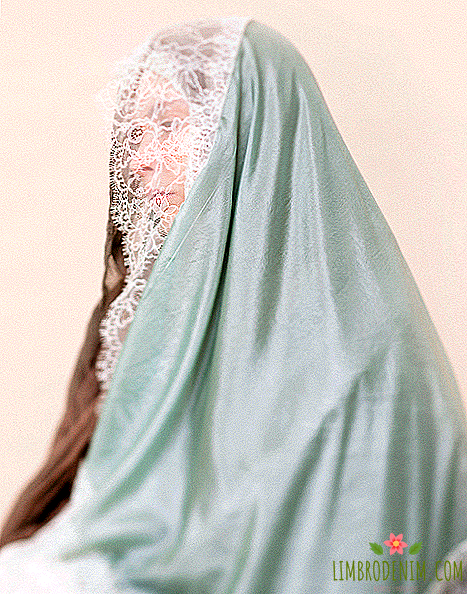
Lord, his command and mercy for us. The person is weak and subject to different instigations from the side, so I could not immediately cover up - sometimes I tied something on my head, but it was not a hijab. Then I went to Morocco for the month of Ramadan, and there was an incident involving health: I was physically very bad, I was very poisoned, and at the same time I felt insignificant. This can happen to any person: when you feel good, it seems that you can do anything, that there are no barriers for you, but when the body fails, you stop feeling all-powerful. I then completely weakened, and suddenly I wanted to cover up - I realized that without this I am not protected, even when I observe all the other regulations of my religion. I felt that I used to be a hypocrite, and immediately put on a hijab - I returned to Moscow in it and did not take it off anymore.
My friends and relatives reacted surprisingly calmly - I did not feel aggression from any side. I always dressed not quite trivially, so, probably, many perceived the hijab as part of a new image, and nobody asked too many questions. I don’t miss the clothes I wore before - I’ve already distributed all the old stuff. Сейчас я думаю, что самовыражение через одежду и внешность - для тех, кто не может проявить себя иначе.

Иногда я еду в метро, и мне кажется диким, что не все женщины покрыты, что они показывают себя

Мне нетрудно соблюдать предписания ислама. Когда ты понимаешь, кто твой Создатель, осознаёшь, что на первом месте не твои мелкие дела, а благодарность богу, всегда найдёшь пять минут, чтобы помолиться. Люди тратят гораздо больше времени на абсолютно бесполезные дела. Prayer is inspiration, at this time you are surrendering to what is really important, and your little life takes on meaning. People who believe that this is a restriction of freedom are very mistaken. This is freedom - this life is finite, and the next life is eternal, we must prepare for it.
When I'm covered, I feel protected. I can not imagine how I would now go out without a hijab. There is no longing for wind blowing my hair. Sometimes I ride the subway, and it seems to me wild that not all women are covered, that they show themselves. After all, this is a prescription for everyone: all religions say that a woman should be in a cocoon, should be closed. Hijab protects women from the views of others, and from themselves. A woman is a weak creature, most of her is of unrest and mud, and therefore we have a great responsibility - you should not show off your beauty. This universal rule is not temporary, not national, not cultural. For men, the analogue of the hijab is a beard, a symbol of masculinity and modesty.

I thought back about adopting Islam, but then it faded into the background compared to other bright events in life. The more I learned about Islam, the more I understood that Sharia law converges with my understanding of the world. I found answers to many questions that tormented me all my life. Less than two months later, as I clearly understood that I wanted to convert to Islam, I came to the mosque in the hijab.
My family was very negative about my decision. This problem is relevant for many new Muslims: many ask me what to do with the reaction of loved ones, how to deal with it, but I do not know. My relatives still do not respect my religion and are trying to pressure me to return to my former life. They say that I was an ambitious girl with a great future, and now has become a hypocrite. This is unpleasant, and you need to work a lot, first of all on yourself, to overcome resistance and not respond with negative.
When I was just about to convert to Islam, I had absolutely no money to buy a hijab. When my Muslim girlfriend asked why I was slow with coverage, I told her that this was a financial problem, she laughed and gave me a hijab. I got to the house in it - I remember that it was already snowing and it was almost winter, but I took it off at home and five minutes later I went outside without a hijab, just in an ordinary scarf. Then it was very embarrassing.
When I converted to Islam and came out of the mosque in a hijab, I felt clean — as if I had just been born. I used to notice a lot of interested looks chained to my body, and when I started wearing the hijab, I began to notice other looks - respectful. Hijab glorified me, not humiliated, this is a very interesting feeling. First of all, it protects from men's views - from those who look at you as if they were a piece of meat, and also hijab protects them from the sins of the world around them.

I am very calm about oblique views: in my past life I was bald, all in piercings and tattoos, so I got used to the excess of attention

I am very calm about oblique views: in a past life I was bald, all in piercings, tattoos and often looked like Lady Gaga, so I got used to an excess of attention. Once I wanted to go to a woman on the street to ask for directions, but she did not let me in, started shouting and insulting me. It was funny and a little insulting.
There are attacks when you look at old photos and you want to return to the “free” old life - but when you ask yourself why, you understand that there is no point in it. For me, Islam is the truth, and even if I take off the hijab, stop praying and keep fasting, I will remain a Muslim and cannot refuse it.
I think that a person’s worldview is beginning to take shape very early, before three years old. If I have a daughter, I will explain to her from childhood that the hijab is a duty that benefits her. I think that with such upbringing, she herself would like to wear the hijab, and then - let's see how the Most High orders, so be it.
I, like many girls, want to constantly buy new scarves and clothes - but we must remember that waste is also a vice. I roll the shawls into rolls and put them on the shelf with a pyramid. The most extravagant of my old things I left for myself and put on at home for my husband - when he comes home, I meet him very beautiful.
Previously, I was professionally involved in sports, but now I took a pause, but in the future I plan to resume powerlifting classes, at least at the amateur level. I will be engaged in bloomers and a sweatshirt or a long sports tunic. I do weightlifting, there are no sharp movements like running or jumping, so such clothes do not constrain movements.

as a rule, it meant that she fell in love with a Wahhabi boy, which caused a clear negative reaction from the family. This is not the case now; many girls do wear the hijab for personal religious reasons.
The Soviet Union made its own adjustments, so secular Islam is now much more common - "we all know, we follow the basic rules, but we believe in the soul, so we don’t wear the hijab." At the same time, in Kabardino-Balkaria, where I was born, many women begin to wear a headscarf after marriage - this is due not so much to religion, but to the local culture. The tradition has been transformed so that it is not always necessary to wear a headscarf, but only when the husband’s relatives: it turns out that if you live with the father-in-law and the mother-in-law, you cover the head constantly, and if you go to your relatives once a month, you wear it once a month.
I think that, historically, the hijab is really associated with the oppression of women (to recall at least the Iranian religious revolution), but if no one forces a girl to cover up, and she wants it herself, wildly forbid her to do so. This is her right. In my region, girls are not forced to wear a headscarf, but sometimes they grow up and come to this themselves. In the end, it's just an item of clothing, to ban the hijab - this is how to ban pants. But when this is forced, as, for example, in Iran or in Chechnya, where you have to cover your head, the hijab really becomes a symbol of oppression.

I think, historically, the hijab is really associated with the oppression of women, but if no one forces a girl to get covered, and she wants it herself, it’s wild to forbid her

Radical Muslims do not consider secular Islam to be real, and in some ways they are right: secular Muslims do not live by the canons that are spelled out in the Quran. This is actually a very deep topic, which in a nutshell can not tell. For me, national identity has always been more important than religious. Probably, if I married in the village and had to wear a headscarf in front of my husband's relatives, I would wear it, because it is a tribute to tradition. Many women in the North Caucasus wear a headscarf, but this is not a hijab - they just knot it in the back, hair is visible. Often, adult women are allowed to daughters-in-law not to wear a headscarf with relatives, if they do not want Of course, religious people may say that they live wrongly and will burn in hell, but in the Caucasus they are also taught to respect their elders - so two attitudes are encountered here.
Now it is generally difficult to surprise with something: I have a friend who used to wear dreadlocks and smoked secretly from her parents, and now she is wearing a hijab, there are also opposite cases - when women take off a scarf. Often this happens just after they disagree with radically religious men: when a husband goes to the mountains by a fighter, the wife realizes that something has gone wrong and gradually refuses the hijab. I have a friend who usually does not wear the hijab, but he puts on a special black hooded hoodie for the time of namaz. So does my aunt - she is all so secular, dyed her blonde, but does namaz and covers her head for this time. Religious children say that it is wrong: in theory, you should look like you in everyday life, just like during prayer, so that you never feel ashamed to appear before God.
Muslims are generally ashamed of everything - for example, if you smoke and do namaz, they will tell you that you are a hypocrite. It seems to me that this is wrong, because Islam never adapts itself this way: accusing a person of hypocrisy for any inconsistencies with strict norms, he is only pushed towards radicalism.


